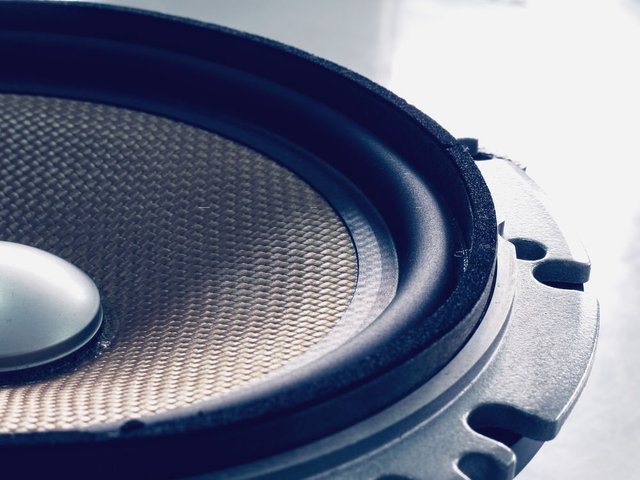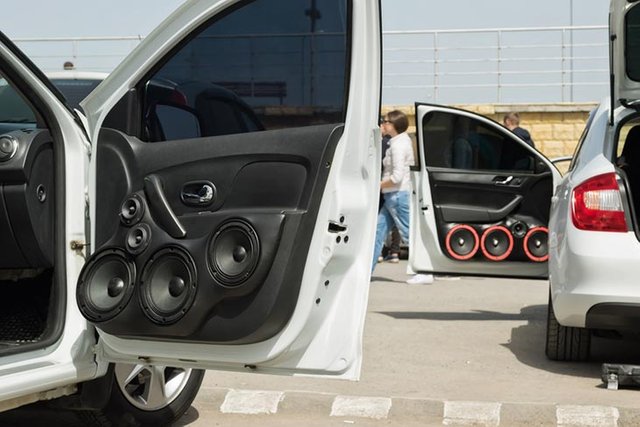【Hot】Coaxial VS Component Speakers » What is the Difference between Coaxial and Component speakers?
Perhaps you are about to upgrade your car audio system, and you are in the dark trying to understand the difference between coaxial and component speakers. They have many differences and also share similarities in terms of sound production and some technical aspects, for instance, their configuration.
When referring to their configuration, we mean whether they are 2-way, 3-way or 4-way speakers. Before we get details on what differentiates these two types of speakers, first you need to understand some nitty gritty about speakers. This will help you understand the difference that exists between these two types of speakers.
What are Speaker Components?
The human ear can sense sound from the frequency as low as 20Hz to as high as 24 kHz beyond which it will be felt as harmful sound. A speaker will, therefore, incorporate drivers that will separate this frequency range into different bands where specific parts are directed to cover certain frequencies for a good imaging.
These drivers that are meant to produce certain frequencies are called speaker components. These components include;
Woofers
This speaker component is designed to play frequencies between 100 Hz to 5000 Hz. These are the frequencies that cover most of the midbass, vocals, leads and generally the midrange. Woofers are also characterized by large cones that have stiff materials and sensitive voice coils.
Subwoofer
A subwoofer is a special component of a speaker designed to play frequencies below 200 Hz. Since producing such frequencies requires displacement of a large amount of air, these speaker components are characterized by large cones. And because of this fact, they are normally installed differently through their own channel in the trunk.
Tweeters
These are small cone speakers that are designed to produce frequencies as high as 2 kHz to 20 kHz. Since most of these frequencies do not require displacement of a large amount of air, these components are small in size with very sensitive dome-shaped cones.
Super tweeters
These are special tweeters that produce ultrahigh frequencies. They are normally found in a multi-driver speaker system. They are meant to recreate a clear sound field. That is why they are added as a supplement to boost the high frequencies at which tweeters may distort. They are meant to respond to frequencies above 20 kHz.
Crossover
A crossover is not generally a speaker component, but a filter driver meant to separate the frequencies into the right spectrum meant for the different speaker components. It splits the audio signal into different ranges where it can be sent to the different drivers. Crossovers will determine whether a speaker is a 2-way or a 3-way.
Difference between coaxial and component speakers
1. Coaxial speakers
The coaxial speaker, also called full-range speaker is a speaker where the individual components are installed in one unit and radiate sound from one point. These components will mostly include the woofer which covers the midrange and a tweeter which covers the high frequencies. Coaxial car speakers come in different sizes and shapes. They are normally characterized by a woofer cone and a tweeter embedded in the middle.
A limitation that comes with this type of speakers is that there is a typical misalignment of sound. The low frequencies from the woofer may slightly arrive before the high frequencies from the tweeter.
This misalignment is what is commonly not addressed by automobile sound systems. The after-market manufacturers will tend to introduce time correction factor which makes their speakers much better than stock speakers.
2. Component speakers
Component speakers are also called ‘separates.' The component speakers have their components matched for quality sound. These components are physically installed separately but are joined through a crossover where the sound signal will be filtered into the frequency range that will go through the woofer, midrange and the tweeters.
The tweeter is normally positioned in the direction facing the user on the dashboard or any other convenient position while the midrange driver which is usually a woofer is placed where there is room on the door.
See Also: Best Car Speakers<<<
So What Exactly is The Difference Between Coaxial and Component?
There are so many differences between coaxial and component speakers that every car owner should know about. These differences should help you in making your choice regarding the type of speakers that you would like to install in your car.
Before learning more about the differences between these two types of speakers, here is a useful video that will act as a curtain raiser before you learn about the main points.
Appearance
A coaxial speaker will have a woofer cone and a tweeter as a unit. They also have an inbuilt crossover. On the other hand, a component speaker will have the woofer and the tweeter separate from each other. It will also have a crossover introduced as a component.
Installation
On installation, full-range speakers are the easiest and the simplest when installing. They are the most popular and most compatible with most factory systems. They are also the cheapest. If you are really a budget audiophile, this will be the best option to go for.
Component speakers are expensive when it comes to installation and will require some additional knowledge or skills. It may also involve hiring or an audio expert to install them which in the end will increase your budget.
Sound Imaging
On sound imaging, the coaxial speakers are little not good. This comes from the fact that the sound drivers are located in one unit. The frequencies will, therefore, build up leading to muddiness when it reaches your ear. The fact that you will have the speakers far from the listener means that some frequencies will be obscured before they reach the ear.
Component speakers excel when it comes to sound imaging. Since they have separate components, the tweeter can be positioned in an ideal position for maximum sound deliverance. The tweeter might be placed on the dash pillars either on axis or off axis.
On axis implies that the tweeter is placed in the direction of the listener. Off-axis on the other hand means that the tweeter is positioned in a direction that faces away from the listener. The best position is on axis since this is the most suitable for high frequencies.
For low frequencies off axis will be the best. That is why most woofers are positioned away from the listener. This is another reason why subwoofers are always installed in the trunk.
A point to note is that both coaxial and component speakers can be 2-way, 3-way or 4-way speakers. For example, a 2-way coaxial and 2-way component speaker will both have a tweeter and a woofer.
The difference comes in on how they appear. A 2-way coaxial speaker will have both these two drivers as a single unit, but a 2-way component speaker will have these two separated. The same applies to 3-way and 4-way.
For more information: How to Measure Car Speakers Size
Wrapping up
There you go on the difference between coaxial and component speakers. Now you know some key areas that make coaxial and component speakers different from each other. As much as we have suggested that component speakers are the best, it will still depend on your preference and how you sound treat your car.
You might own some high-end component speakers but still sound poorly reason being you have not soundproofed your car from outside distractions.
There are a million ways that can make a coaxial speaker sound better than a component speaker or the other way round. The only words to sum that up are, “be the best audiophile you can ever be.” Those are our final words. If you are still not so sure about the type of speakers to go for among the two, reach us with your questions and comments and we shall help you out as soon as possible.



Congratulations @kevinsteffey! You received a personal award!
You can view your badges on your Steem Board and compare to others on the Steem Ranking
Vote for @Steemitboard as a witness to get one more award and increased upvotes!